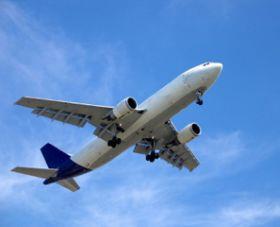
The International Air Transport Association (IATA) released figures showing a 1.4 per cent expansion of global freight tonne kilometers (FTKs) in 2013 when compared to 2012.
Cargo markets made very slow progress during the first half of the year, the IATA said in a statement. Acceleration in the trend took root in the latter half of 2013, placing airfreight volumes on a steadily increasing trajectory. Capacity grew faster than demand at 2.6 per cent and load factors were weak at 45.3 per cent.
Regional performance varied. Middle Eastern and Latin American carriers reported the strongest growth in demand (12.8 per cent and 2.4 per cent respectively). Asia-Pacific carriers, which have nearly 40 per cent of the global airfreight market, saw cargo activities shrink by 1 per cent over the year.
“2013 was a tough year for cargo. While we saw some improvement in demand from the second half of the year, we can still expect that 2014 will be a challenging year,” said Tony Tyler, IATA’s director general and CEO.
Asia-Pacific carriers saw freight volumes fall 0.3 per cent in December, and declined 1 per cent for 2013 as a whole, compared to 2012. The economic performance of the region was patchy, as was growth in trade volumes, although these have picked up in recent weeks. Despite shrinking demand, capacity grew by 0.8 per cent in 2013.
European airlines reported cargo growth of 2.9 per cent in December and 1.8 per cent for the whole of 2013, the best volume performance of the traditional ‘big three’ aviation regions. Manufacturing indicators suggest that the fourth quarter of 2013 was the strongest quarter for two-and-a-half years, and the outlook, particularly in Germany, is improving.
North American carriers’ air freight volumes contracted 0.5 per cent in December and fell by 0.4 per cent for the whole of 2013, compared to 2012. Indicators of business activity in North America have shown some improvement in recent months, but remain below the levels seen at the start of 2013.
Middle Eastern carriers continued their strong growth, expanding FTKs by 13 per cent in December and by 12.8 per cent for 2013 as a whole. The Middle East has benefitted from improving economic conditions in Europe as well as solid growth in domestic Gulf economies. Middle Eastern carriers have also captured a significant share of the increase in the volumes out of Africa.
Latin American airlines’ freight volumes fell 5 per cent in December, but for 2013 as a whole, increased by 2.4 per cent. This is a slower pace of growth than in 2012, largely reflecting sluggish growth in Brazil. However, there have been signs of a steady pick-up since the third quarter of the year.
African airlines saw their freight volumes rise 1.7 per cent in December and grow 1 per cent for 2013 overall. African volumes, after a strong start to 2013, suffered from a mid-year lull, which has continued into the second half of the year, with weakness in major economies like South Africa as well as a slowdown in regional trade dampening demand.



